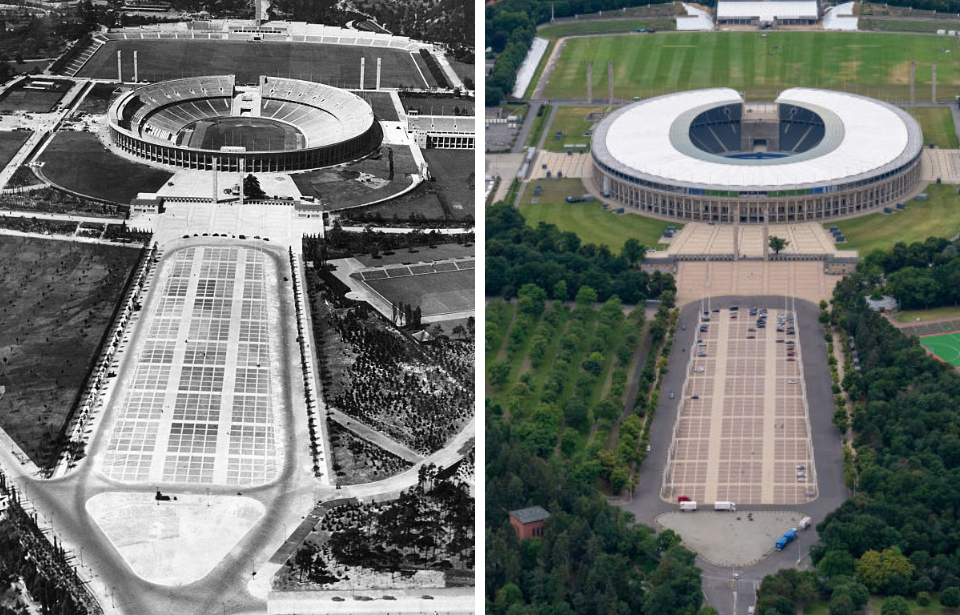The long-term effects of war are felt by all sides. This is even more evident in the case of the two World Wars, given the size of the conflicts and the number of countries involved. These effects vary, including the psychological impact on veterans, rebuilding areas torn apart by combat and dealing with civil unrest. For Germany, the most tangible legacies of the Second World War can be seen in the buildings that were created during the height of the National Socialist German Workers’ Party.
These are 10 World War II-era German structures that have survived into the present day.
Olympiastadion – Berlin, Germany
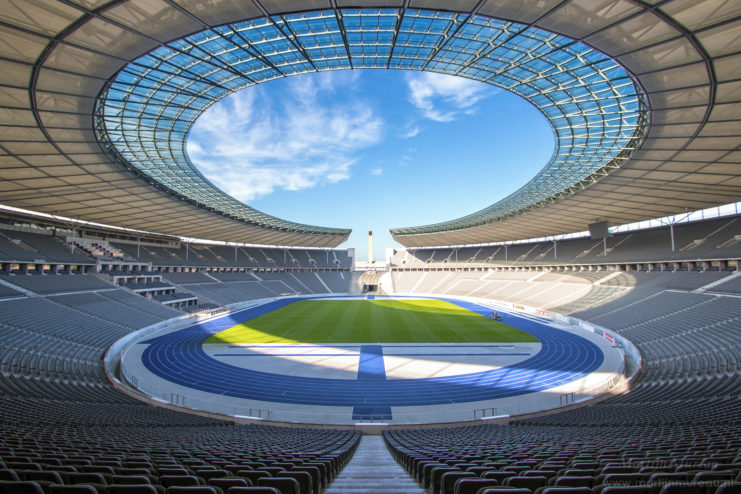
Before the Second World War began, Germany came under the control of a new dictator. He took power in 1933 and, three years later, hosted the Olympics in Berlin. Initially, the plan was to modernize an already existing stadium, but it was later decided that it would look better for the country’s leadership for an impressive new structure to be built.
The new Reichssportfeld complex was built between 1934-36 and consisted of many different buildings, the most impressive of which being the Olympiastadion. When WWII came to an end, the Reichssportfeld was used as the headquarters for the British forces until 1994, with the German stadium and surrounding buildings playing host to different sports events.
When the British left, the German people were left to decide what to do with the stadium, due to what it represented and who it was built by. Ultimately, the decision was made to renovate the structure and continue using it.
Olympic Village – Berlin, Germany
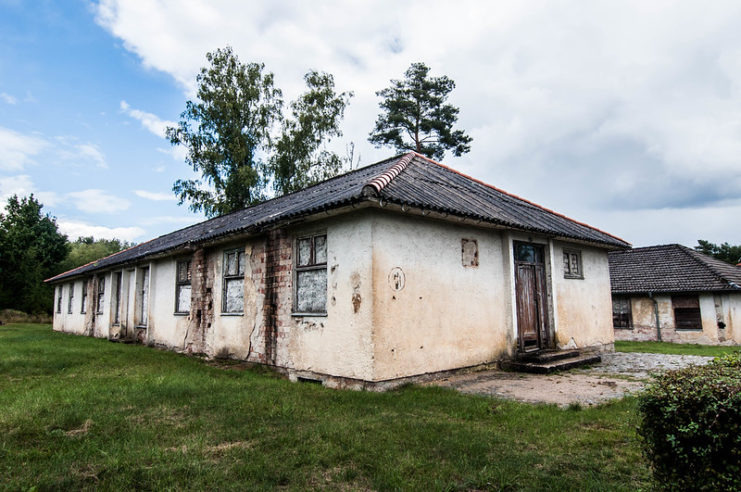
To host the 1936 Olympic Games, it was necessary to provide accommodations for the athletes. The Olympic Village was built 14 km west of the Olympiastadion, and it accommodated over 4,800 male athletes and their coaches. The 500 or so female athletes who attended were housed at the Reichssportfeld.
The Olympic Village was located on land belonging to the Wehrmacht, with the buildings promised to them once the Olympic Games were over. One hundred and thirty-six bungalows were constructed, and the grounds were considered quite luxurious, with a manmade lake filled of animals borrowed from the Berlin Zoo.
After WWII came to an end, the German village and its buildings were taken over by the Soviets for use as a headquarters. When they left in 1992, the area was abandoned. However, as of 2019, there were ongoing renovations being done to turn the area into residential townhouses.
Colossus of Prora – Rügen, Germany
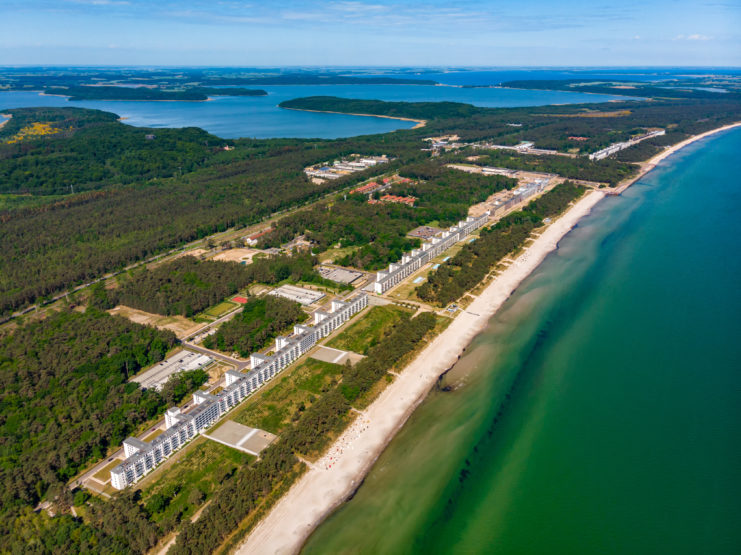
One of the lesser-known complexes built by Germany before the Second World War was the Colossus of Prora. Intended to be a holiday resort, it was made up of eight buildings, which ran along the length of a 4.5 km-long beach. It was built between 1936-39 as part of the Strength Through Joy organization, which would, allegedly, help middle-class pastimes become available to the working class.
Many structures were constructed, although the area couldn’t be completed before the start of the war. When WWII ended, the German buildings were taken over by the Soviets. Following the fall of the Berlin Wall, the site once again fell under German control. Prora never turned into a resort that could hold 20,000 guests. However, by 2018, it had become a holiday destination, connected to a nearby tourist area by a railway.
Flak towers – Germany and Austria
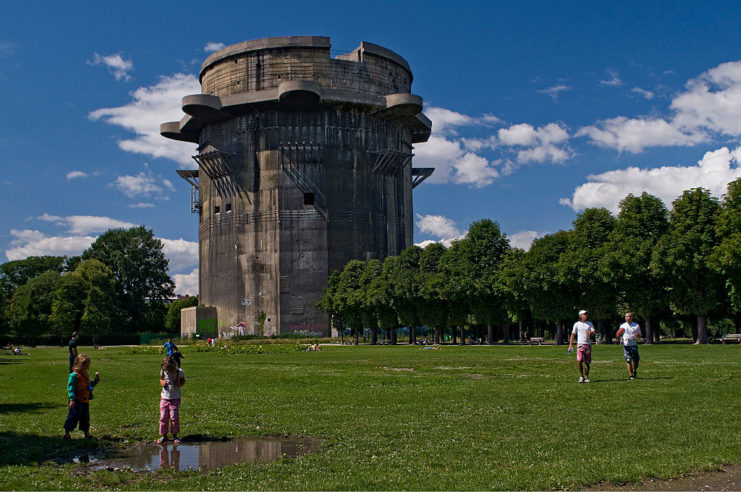
From as early as 1940, Germany built anti-aircraft gun towers across its territories, to aid in the defense of major cities. There were eight primary ones: three in Berlin, three in Vienna and two in Hamburg. There were also smaller ones. Operated by the Luftwaffe, they weren’t only important for defense – they also acted as air raid shelters for locals.
The flak towers were extremely well-built, to the point that even the largest Soviet guns were unable to deal damage. This is also the reason why so many still exist, as it would have been a costly and lengthy process to have them removed (although some were). Those that remained following WWII have been converted for other purposes, such as an outdoor climbing wall and a public aquarium, and are some of the few German buildings from that era to stay standing in other countries.
Rally grounds – Nuremberg, Germany
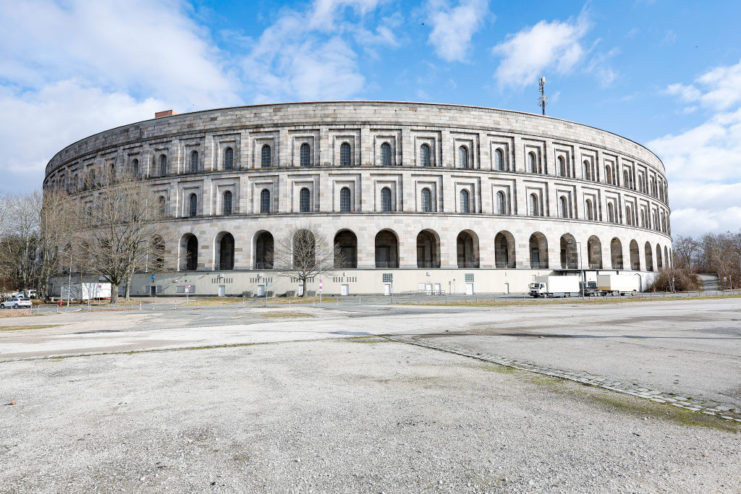
Located in Nuremberg, the Reichsparteitagsgelände is arguably one of the most recognizable of the many German buildings constructed in the lead up to WWII. It was developed as a rally ground for German leadership to deploy troops and put forward propaganda.
The initial plan was for the area to have 12 buildings joined by open spaces spanning 11 square km, which would allow hundreds of thousands of people to watch the rallies. Instead, all that was built was the Zeppelinfeld and Kongresshalle. Some structures already existed, such as the Ehrenhalle.
Throughout the Second World War, the rally grounds were used extensively by German leadership. When the conflict ended, the buildings remained, leaving the citizens of Nuremberg with a difficult decision: tear them down or leave them standing. It was ultimately decided they would remain as reminders of the past.
Haus der Kunst – Munich, Germany
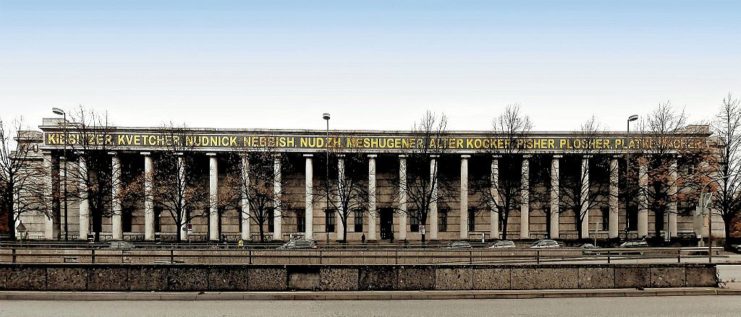
The Haus der Kunst was built between 1933-37 and was intended to be a museum to showcase German art. It was the first major construction undertaken by the Führer before WWII, and officially opened on July 18, 1937. In the years before the war, it hosted many gatherings and exhibitions dedicated to German culture.
By the end of the WWII, the German building had been taken over by the American forces for use as an officers’ mess, before being converted back into a museum in 1946. From then on, it hosted various traveling exhibitions, some of which focused on the previous conflict, although it didn’t have a collection of its own.
Renovations are planned, for which the estimated timeline is unclear.
Ministry of Aviation – Berlin, Germany
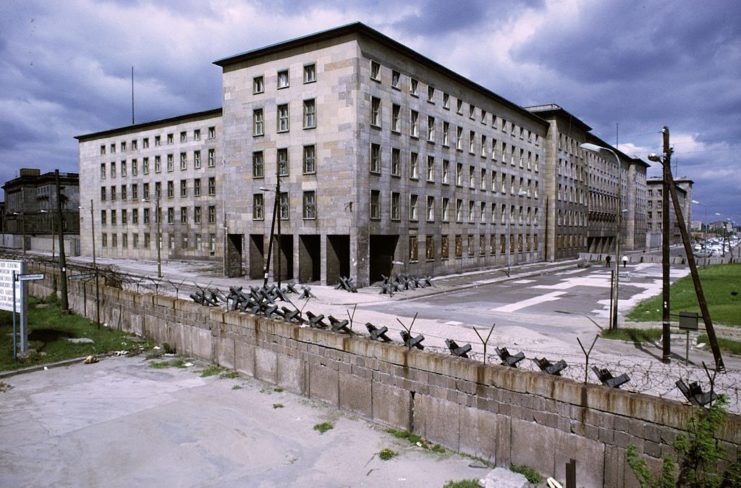
Opened in 1936, the Ministry of Aviation building in Berlin has an intriguing history. The Reichsluftfahrtministerium (RLM) was built in a modern style, despite doing so being against the law at the time. It was built to house a staff of 2,000 officers, who oversaw the development and production of German aircraft.
The German building is an important piece of historical architecture, as it was one of few in central Berlin to survive the heavy bombings carried out by the Allies during WWII. When the war ended, it found itself located in the Soviet occupation zone, and it made the House of the Ministries of the German Democratic Republic (GDR).
The building is currently occupied by the Federal Ministry of Finance.
Lorient Submarine Base – Lorient, France
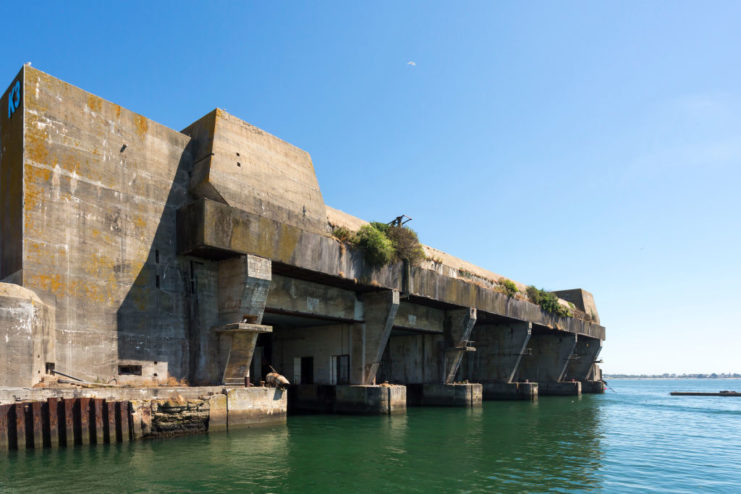
Located in Lorient, France, this submarine base was constructed between 1941-43 for use by the Kriegsmarine. The site was ideal for the German U-boat fleet, as it greatly reduced the distance the vessels had to travel to attack Allied ships. The Allies knew about the base and targeted it during air raids.
Despite these attacks causing significant damage to the structure, it survived the war and was taken over by the French Navy upon Germany’s surrender. The military branch used the base until it was decommissioned in 1995, and during this time it was home to 2,000 naval personnel and 10 submarines. A few years later, it opened to the public, and today is the site of a museum.
NS-Ordensburgen – Germany and Poland
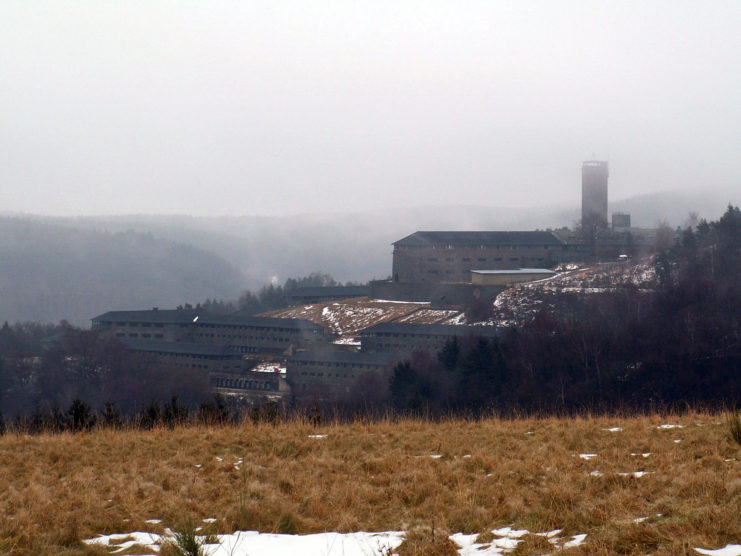
NS-Ordensburgen were schools for elite members of the National Socialist German Workers’ Party. Those wishing to attend had to meet very specific criteria. They had to be between 25-30 years of age, be a member of an approved affiliate organization, be in good physical health and be “pure-blooded with no hereditary defects” – essentially, they were designed for the children of party leaders.
Throughout the party’s rule, three schools were built, with a fourth planned. Construction of the German buildings began years before WWII, between 1933-34, and they saw use throughout the conflict. Today, all three still stand. Ordensburg Krössinsee is used by the 2nd Battalion, 12th Tank Brigade of the Polish Land Forces, while Ordensburg Sonthofen is protected as a historical site. Ordensburg Vogelsang was used as a military training area, but has since been repurposed.
Kehlsteinhaus (Eagle’s Nest) – Berchtesgaden, Germany
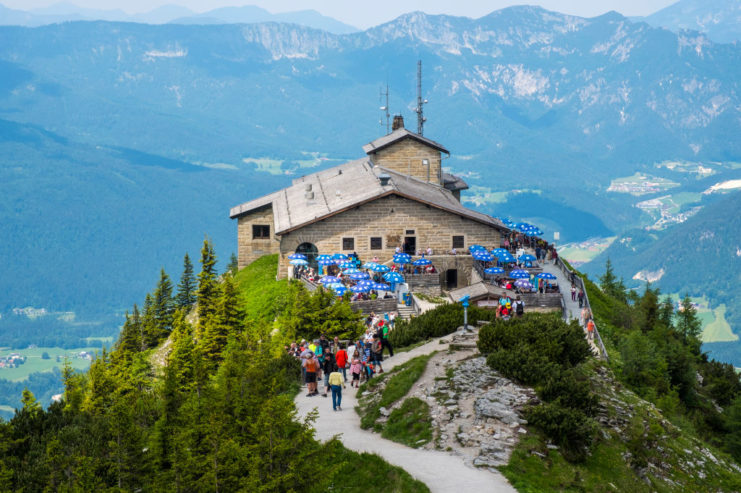
The Kehlsteinhaus was constructed in the Berchtesgaden Alps in 1938. Designed to be a gathering place and social hideaway for high-ranking German officials during WWII, the building was used throughout the conflict. Given its importance to the Führer, it was a target of air raids on April 25, 1945. However, its small size meant the Allies were unsuccessful in hitting the property.
More from us: Operation Tonga: 150 British Paratroopers Took the Merville Gun Battery Before D-Day
After taking control of the area, the Allies made the Kehlsteinhaus a military command post. It saw use as such until 1960, when it was given back to the German state of Bavaria. Since then, the building has been converted into a restaurant and beer garden, and is a popular tourist attraction.
